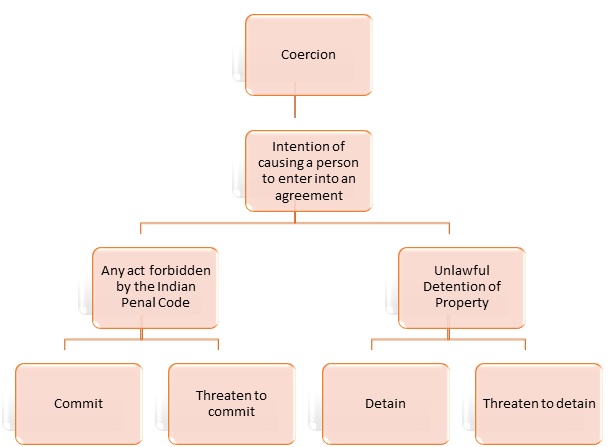GUEST POST – JOURNEY OF THE EPIDEMIC DISEASES ACT FROM 1987 TO 2020
INTRODUCTION
The basic purpose of the Constitution
is to protect and inform its citizen by the way of laying down
guidelines for making, enacting and implementing laws. As said by Professor
Lynn Mather,
‘Law is not autonomous, standing
outside the social world, but is deeply embedded within the society.’
People develop the ideas of right and wrong,
correct or incorrect, fair and unfair on the basis of the laws enacted by the
state. The behaviour and actions of citizens depend on the time and situation
they are faced with. With time, generations change, so should the laws.
Looking at the current situation,
where the times have changed, The Epidemic Diseases Act, 1987 which was
made hundred and twenty-three years ago does not fit into the society
anymore.
The political, economic, and social
scenarios have transformed. The mindset of the people living in this socio-economic environment is a lot different from back then. There is a said
phrase,
“That used to be considered as
harmless prank, but times have changed, and now you could get arrested for the
same.”
Thus, the pressing need to amend the
law has been called out by its own users. In this article, first, we will
understand the need and purpose of the Epidemic Diseases Act (‘the Epidemic Act’)
itself.
Secondly, we will compare ‘The
Epidemic Diseases (Amendment) Bill, 2020’ which was recently passed by the
Rajya Sabha and is to replace The Epidemic
Diseases (Amendment) Ordinance, 2020 (‘the Ordinance’) passed in the month of April.
The Epidemic Diseases
(Amendment) Ordinance, 2020 was promulgated on April 22, 2020. Since the
existing laws turned out to be insufficient, the main aim of the Ordinance was
to focus on increasing the protection of healthcare personnel, to protect them
from the unfair practices carried out against them, as well as to multiply the
powers of the Central Government to control the situation from worsening in the
country and safeguard its citizen from deadly circumstances.
PURPOSE OF ENACTMENT OF THE EPIDEMIC ACT, 1897
The Epidemic Act, 1897, colonial-era legislation, was first enacted to cope with the outbreak of bubonic
plague which betided in Bombay.[1] During the British Raj, the law was
established for containment of the epidemic by imposing certain restrictions
and providing authority to the officials, up to some extent, in order to cease the further spread of the disease.[2]
The Bubonic Plague, also known as “The
Black Death” had existed for more than a thousand years.[3] However, the first recorded case was
in China in 224 B.C.E. It was also significant in Europe during the
mid-fourteenth century.[4]
The first case in India was in
September 1896 in Mandvi (Bombay), reported by Acacio
Gabriel Viegas, a medical practitioner.[5] People were asked to stay indoors;
massive cleaning operations were undertaken at that time. This had led to the
formation of the Act. Back then the times had changed suddenly and something
which wasn’t even considered suddenly became a necessity.
PRECIS OF THE EPIDEMIC ACT
- Section 1 defines the territorial jurisdiction of the Act in various states in India. It excludes Part B; however, it was later amended to add the same.
- Section 2 states the power to make special measures and prescribe regulations in response to the dangerous epidemic disease. Here, if under some circumstances the State Government believes that the ordinary provisions of the law are not sufficient for the purpose, it can empower a person to take the necessary courses of action. A temporary regulation may be imposed on the public or a set of persons or a class of persons if it deems necessary to prevent the outbreak of diseases.
- Section 2A enumerates the powers of Central government in the times of epidemics. The Central Government is given the authority to take measures or prescribe regulations or inspections of any ship, vessel leaving or arriving at any port in the territory lying under the purview of the Act.
- Section 3 prescribes the penalty levied if the regulations of the Act are disobeyed by the persons on whom it is imposed. An offence is considered to be committed which is punishable under section 188 of the India Penal Code (45 of 1860).
- Section 4 provides protection to the persons authorized under the Act. No legal proceedings shall lie against the person for anything done in good faith or intended to be done under this Act.
ENFORCEMENT OF THE ACT
This Act has been routinely enforced
since 1897. It has been operated in India for the containment of various
diseases, such as swine flu, cholera, malaria, and dengue.[6] In the year of 2009, the Act was put
to force in the city of Pune to combat the swine flu. In 2015, it
was utilized to deal with dengue and malaria in Chandigarh.[7] Again in 2018, the Act was enforced
in the state of Gujarat to control the spread of cholera.[8]
More recently, in March 2020, the Act
was enforced across the whole nation in order to limit the spread of the deadly
novel coronavirus diseases.[9]
It is necessary to point out that the
situation this time is a lot worse than it has ever been. This has, thus,
called for rethinking of the Act. A little improvisation to the Act is
necessary to handle the situation in a more precise manner. Hence, before we move
further it is important to understand the current circumstances of the state of
affairs.
‘PANDEMIC SITUATION’- CURRENT STATE OF AFFAIRS
What is a Pandemic- is the primary question, which first
is needed to be addressed. The word ‘pandemic’ specifies a type of epidemic
that the whole world is trying to fight against, in some way or the other.
However, a concrete description was provided by ‘World Health Organisation’ (WHO)
defined the situation-
“A pandemic is the worldwide spread of
a new disease.”
To elaborate in detail, when a disease first emerges that is not known to have existed before, most of us lack
the natural immunity required to fight against it. Sometimes this can cause a
rapid spread of the disease between people and across different communities and
even around the world.
India, in the month of April, recorded
a total of 26,496 cases since the outbreak, out of which 19,732 were
active cases and 5,939 were recovered cases.[10] Unfortunately, 824 patients succumbed
to the disease.[11] The Act needed to be modified
according to the 21st-century conditions. This emphasized the necessity of
introducing an ordinance in the Parliament, which was passed as a Bill in Rajya
Sabha in the month of September.
REASONS FOR AMENDMENT TO THE EXISTING
LEGISLATION
There were two major reasons for the Union Cabinet to approve the Epidemic Diseases (amendment) Ordinance, 2020, an Ordinance to amend the Epidemic Diseases Act, 1897.
- It was observed amongst people across different age groups, that most of the people weren’t serious about the lockdown situation.[12] This clearly showed the lack of information amongst the general public. The Epidemic Act, 1897 doesn’t necessarily mandate the Government to provide complete knowledge of the current status.
- The Ministry of Health and Family Welfare, in its press release dated April 22, 2020, said that, "…perceived as carriers of the diseases, there has been stigmatization and ostracization and sometimes worse, acts of unwarranted violence and harassment against our medical professionals. Such a situation tends to hamper the medical community from performing their duties to their optimum best and maintaining their morale, which is a critical need in this hour of national health crisis.”
Standing by the fact that the country has zero-tolerance for violence against medical practitioners, a need for an amendment was felt.
“Everyone was feeling sad and bad.
That was the time the government thought of taking a proactive step. When the
government reviewed, it found there were minimal laws and powers in some
states. There was a need to have a central law to put in place a prohibitory
mechanism to stop such activities,” said Health Minister Harsh Vardhan.[13]
The Act, thus, needed to be modified
according to the 21st-century conditions. The necessity of introducing an
ordinance in the Parliament was felt, which was subsequently passed as a Bill
in Rajya Sabha in the month of September.
Let us now look at the drawbacks of The Epidemic Act,1897 which are overcome by the "The Epidemic Diseases (Amendment) Bill, 2020”.
ALTERATION IN QUONDAM ACT
The need of The Epidemic Act, 1897 was absolute. However, in the present context, its exact implementation is unnecessary. The Act in itself does not provide complete protection to the people under its scope. Hence, the amendments in the 2020 Bill is appreciated. These amendments will help the Government to overcome the lack of awareness amongst its citizens. For instance, at the outset, it is stated that ‘extending the application of the Act to whole of India’, unlike in the existing Act of 1897. In addition to that, the Bill passed also defines the Sections of the Act in a slightly different manner.[14]
- After Section 1 of the principal Act, Section 1A has been inserted, which states that “act of violence” includes acts committed by any person against a healthcare service personnel serving during an epidemic, which causes or may cause harassment, harm, injury, hurt, intimidation, danger to life, obstruction or hindrance, or loss/damage to any person or property under the custody of the healthcare personnel.
- Amendments to Section 2A specifies that the Central Government can now not only inspect the vessels in the territories up to which the Act extends (now the whole of India), but may also inspect or detain any person intending to travel therein, or arriving thereby, as may be necessary.
- Insertion of Section 2B prescribes the prohibition of violence against healthcare service personnel and damage to property, during an epidemic.
- Protection Of Action Taken In Good Faith: According to the new amendment, no suit, prosecution or other legal proceedings shall lie against any person for anything which is done in good faith or intended to be done in pursuance of this Act or any Rule or Order made thereunder. (The High Court of Punjab and Haryana declared the Petition of “illegal detention under Quarantine” unmaintainable in the court).
- Penalty - What Was Versus What Is: Section 3 deals with the punishment under the Act. There are a few major changes in Section 3 of the existing Act as it is not only amended but also sub-sections, Section 3A, 3B, 3C, 3D, and 3E have been added.
I. The changes brought in the section
are- any person who commits or abets an act of violence or damage to the
healthcare personnel or his property shall be punished with imprisonment for a
term not less than six months, which may extend to seven years and with fine,
where the fine levied shall not be less than one lakh rupees, extend to five
lakh rupees.
II. Section 3A states, on the commencement of the offences mentioned in the Section 3, the following things must be followed-
- it shall be a cognizable and non-bailable offence;
- no police officer holding the rank below Inspector has been given the authority to investigate;
- the investigation of the case shall be completed within 30 days of the First Information Report (FIR); and
- the trial of the case must be concluded within one year and if not, the judge has to present valid reasons for the delay in writing, that too not exceeding 6 months.
III. Section
3B
states
that, any person who is prosecuted under the offence can be compounded by the
person against whom the act of violence was committed, only with the permission
of Court.
IV. Section
3C
commands
that if a person grievously hurts the healthcare personnel and if it fulfills
the criteria of Section 320 under Indian Penal
Code, then the offender shall be held liable unless the contrary is
proved.
V. Section
3D
presumes
the culpable mental state (which includes,
intention, motive or knowledge of a fact) of the offender. Only under a
reasonable doubt will the offender shall not be prosecuted.
VI. Section 3E states the compensation for acts of violence- i) the convicted person shall be liable to reimburse by the amount to which healthcare personnel is grievously hurt, as determined by the Court; ii) the compensation to damage or loss of property of the healthcare personnel may go as high up as double the market value of the property; iii) In case of, failure of payment of compensation, such amount shall be recovered from the arrear of land revenue under the Revenue Recovery Act, 1890.
OPPOSITION
AGAINST THE BILL
Even
though the Bill may seem flawless, it cannot be completely filtered from its
objections.
For
example- According to a Congress Party leader, Adhir Chowdhury, the Bill was
rushed to be implemented. There were certain changes which needed to be
reviewed. As the saying goes, “haste makes waste.” He said:
“I
would request the government to send the bill to the standing committee and a
comprehensive legislation should be brought in.” [15]
Under the Bill, there
is an amendment which presumes the accused to be guilty of the offence until
unless it is proven otherwise by the defendant. Chowdhury added that
this was in complete deviation from the principles of the country’s legal code.
However, in response to this, the Health Minister replied,
“our government from the last 3-4 years is working on a National Public Health Act to comprehensively deal with issues related to biological emergencies”[16]
Hence,
it was concluded that the Ordinance will not withstand such repeal and will be
enacted or taken under the corresponding provisions of the said Act as amended
by this Act.
CONCLUSION
In
my opinion, the amendments brought in the Bill are stricter in nature which is
necessary in the current times. The nature of the modifications favours the
people who are risking their lives for the society. It not only protects them
from exploitation but also promises heavy compensation in case it happens. The
speedy trial rules are just cherry on the top!
However,
the Act is not a bed of roses. Unlike the Draft PHPCM of Epidemics, Bio-
Terrorism and Disasters Bill, the Epidemic Act does not define terms such as ‘isolation’,
‘quarantine’ and so on. Thus, it fails to educate the masses about these new
concepts, which is essential in the current situation.
It
should therefore be kept in mind,
“The
law is important for a society for it serves as a norm of conduct for
citizens. The law is important because it acts as a guideline as to what
is accepted in society. Without it there would be conflicts between social
groups and communities. It is pivotal that we follow them.”
Similarly,
according to Merriam and Webster,
“An amendment
is essentially a correction. It comes in many varieties, up to and including
the process of altering something through either parliamentary or
constitutional procedure.”
The
above sayings and the entire article make it quite clear for the need,
importance and necessity of amendments in the existing law. It plays a major
role and helps in coping up with the society.
Finally,
one must remember that no law is exact but amendments are what keep it alive in society.
By
Aayushi
Sheth,
II
B.A. LL.B.
Maharaja
Sayajirao University of Baroda, Gujarat.
References
1.
S. 188, Indian Penal Code, 1860.
2.
https://www.merriam-webster.com/dictionary/amendment
3.
The public health (prevention, control and management of epidemics,
bio-terrorism and disasters) bill, 2017.
4.
What Is a Pandemic?, available at https://www.healthline.com/health/what-is-a-pandemic#pandemic-defined
,
last seen on 8/10/2020.
5.
The Epidemic Diseases Act, 1897.
6.
Parliament proceedings | Lok Sabha passes Epidemic Diseases (Amendment) Bill,
The Hindu (22/09/2020), available at https://www.thehindu.com/news/national/parliament-proceedings-lok-sabha-passes-epidemic-diseases-amendment-bill/article32664074.ece,
last seen on 8/10/2020.
[1] Saurav Kumar Rai, How the Epidemic Diseases Act of 1897
Came to Be, The Wire(2/04/2020), available at https://thewire.in/history/colonialism-epidemic-diseases-act , last seen on 8/10/2020.
[2] Ibid.
[3] David Perlin, Ph.D., & Ann Cohen, Epidemics of the
Past: Bubonic Plague, InfoPlease, available at https://www.infoplease.com/math-science/health/diseases/epidemics-of-the-past-bubonic-plague, last seen on 8/10/2020.
[4] Ibid.
[5] Kalpish Ratna, The chilling discovery: when the plague
came to Bombay in 1896, Scroll.in (11/12/2014), available at https://scroll.in/article/694177/the-chilling-discovery-when-the-plague-came-to-bombay-in-1896, last seen on 8/10/2020.
[6] Explained: With lockdown on, what you need to know
about the Epidemic Diseases Act, 1897, Indian Express (23/03/2020),
available at https://indianexpress.com/article/explained/coronavirus-outbreak-janata-curfew-1897-epidemic-diseases-act-6326984/, last seen on 8/10/2020.
[7] Ibid.
[8] Ibid.
[9] Ibid.
[10] Total case count reaches 26,496 with 824 fatalities,
Outlook India (26/04/2020), available at https://www.outlookindia.com/newsscroll/total-case-count-reaches-26496-with-824-fatalities/1814895, last seen on 8/10/2020.
[11] Ibid.
[12] Carelessness leading to rise in Covid-19 cases:
Experts, Times of India, available at
http://timesofindia.indiatimes.com/articleshow/77833756.cms?utm_source=contentofinterest&utm_medium=text&utm_campaign=cppst , last
seen on 30/08/2020.
[13] Parliament
passes bill to punish those attacking healthcare workers, Outlook India (22/09/2020), available at https://www.outlookindia.com/newsscroll/parliament-nod-to-two-bills-related-to-indian-medicine-council-and-homeopathy-central-council/1940377?scroll, last seen on 08/10/2020.
[14] The Epidemic Diseases (Amendment) Act,
2020.
[15] Parliament proceedings | Lok Sabha passes Epidemic Diseases
(Amendment) Bill, The Hindu (22/09/2020),
available at https://www.thehindu.com/news/national/parliament-proceedings-lok-sabha-passes-epidemic-diseases-amendment-bill/article32664074.ece, last seen on 8/10/2020.
[16] Ibid.




Comments
Post a Comment